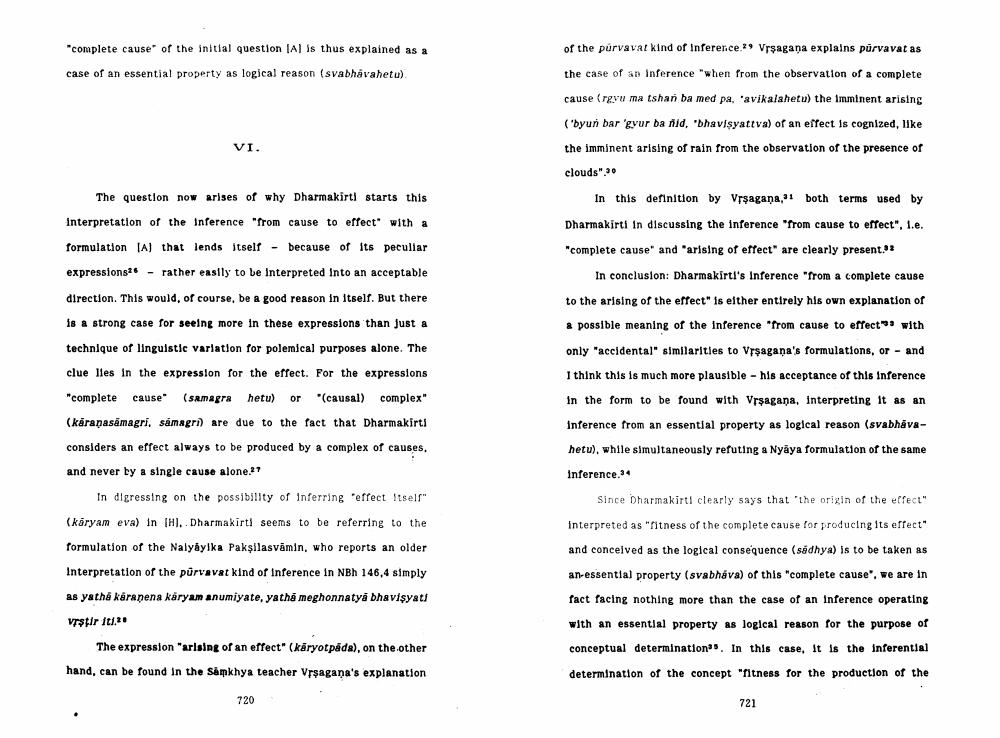________________
"complete cause of the initial question 1A is thus explained as a
of the purvavat kind of Inference 29 Vrsagana explains purvavat as
case of an essential property as logical reason (svabhavahetu)
the case of an inference when from the observation of a complete
cause (rgyn ma tshan ba med pa, avikalahetu) the Imminent arising
(byun bar 'gyur ba nid, 'bhavisyattva) of an effect is cognized, like the imminent arising of rain from the observation of the presence of clouds".30
In this definition by Vrsagana," both terms used by Dharmakirti in discussing the inference from cause to effect", 1.e. "complete cause" and "arising of effect" are clearly present.
The question nos arises of why Dharmakirtl starts this
Interpretation of the Inference
from
cause to effect" with a
formulation IA) that lends itself - because of its peculiar expressionstø - rather easily to be interpreted into an acceptable direction. This would, of course, be a good reason in itself. But there
In conclusion: Dharmakirti's Inference "from a complete cause
to the arising of the effect" is either entirely his own explanation of
* possible meaning of the inference from cause to effect with only accidental" similarities to Vrsagana's formulations, or - and I think this is much more plausible - his acceptance of this inference
in the form to be found with Vrsagana, Interpreting it as an
Inference from an essential property as logical reason (svabhava
18 a strong case for seeing more in these expressions than just a technique of linguistic variation for polemical purposes alone. The clue lles in the expression for the effect. For the expressions "complete cause" (samagra hetu) or (causal) complex" (karaņasāmagri, samagri) are due to the fact that Dharmakirti considers an effect always to be produced by a complex of causes, and never by a single cause alone.27
in digressing on the possibility of Inferring effect itself" (karyam eva) in th). Dharmakirt seems to be referring to the formulation of the Nalyayika Paksilasvamin, who reports an older Interpretation of the purvavat kind of Inference in NBh 146,4 simply
hetu), while simultaneously refuting a Nyaya formulation of the same
Inference.
Since Dharmakirti clearly says that the origin of the effect"
as yatha karapena karyam anumiyate, yatha meghonnatya bhavisyati vrstir 1.2
interpreted as "fitness of the complete cause for producing its effect and conceived as the logical consequence (sadhya) is to be taken as an-essential property (svabhava) of this "complete cause', we are in fact facing nothing more than the case of an inference operating with an essential property as logical reason for the purpose of conceptual determination . In this case, it is the inferential determination of the concept "fitness for the production of the
The expression arising of an effect" (karyotpada), on the other hand, can be found in the Sankhya teacher Vrsagana's explanation
720
721




